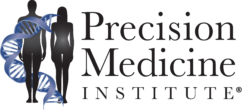In a proof-of-concept study, the researchers used genomic data to ‘develop precision medical tools that improve care for this pervasive disease’
Stanford Medicine researchers have developed a way to apply precision medicine in determining the doses of the most common drug used to treat tuberculosis. This finding allows hospitals treating tuberculosis to better tailor treatment to individual patients and avoid the complications that can occur when too little or too high a dose is used.

The most common drug used in treating tuberculosis is an antibiotic called isoniazid, or isonicotinic acid hydrazide (INH), which is metabolized at very different rates by different individuals. This can result in a buildup of isoniazid in those with slow metabolisms, potentially leading to problems like liver damage. It also can result in low isoniazid levels in fast metabolizers, making the drug less effective.
The different rates of metabolism are known to be genetically influenced, with people from different geographical regions responding differently to the medication. Many individuals of Asian descent, for example, will metabolize isoniazid too quickly while those of European descent may tend to metabolize the drug more slowly.
“It’s well documented that people who take isoniazid have highly variable responses, even with standardized doses based on weight. It’s been this way since the 1950s,” stated infectious disease specialist Jason Andrews, MD, for the Stanford Medicine Scope blog.
Andrews is an associate professor of medicine in the Division of Infectious Diseases and Geographic Medicine at Stanford University and was lead researcher on the proof-of-concept study.
“Despite the fact that this variability is well established, nothing has changed in 50 years. If you’re receiving a dose in Palo Alto, or if you’re receiving it in Cape Town, you get the same standard weight-based dose of the drug. For half the population, it’s the wrong dose,” he added.
The researchers published their findings in the American Journal of Respiratory and Critical Care Medicine, titled, “A Rapid Pharmacogenomic Assay to Detect NAT2 Polymorphisms and Guide Isoniazid Dosing for Tuberculosis Treatment.”
Developing an Automated Pharmacogenomic Assay
In their published paper, the Stanford researchers wrote, “Standardized dosing of antitubercular drugs contributes to a substantial incidence of toxicities, inadequate treatment response, and relapse, in part due to variable drug concentrations achieved. SNPs [single-nucleotide polymorphism] in the NAT2 (N-acetyltransferase-2) gene explain the majority of interindividual pharmacokinetic variability of isoniazid (INH). However, an obstacle to implementing pharmacogenomic-guided dosing is the lack of a point-of-care assay. … An automated pharmacogenomic assay on a platform widely used globally for tuberculosis diagnosis could enable personalized dosing of INH.”
The key barrier to prescribing doses that are best for individuals has not been a lack of knowledge that the problem exists, the Stanford Medicine researchers noted, but an inability to quickly and effectively test for the genetic variations that influence these metabolic differences. This problem is compounded by the fact that many of the areas struggling the most with tuberculosis are developing nations or countries that do not have access to cutting-edge healthcare technologies.
“There’s never really been a way to test for this quickly and get an answer that helps you give the right dose,” Andrews said. “So that’s where our innovation comes in.”
The Stanford Medicine team mined a genetic database of more than 8,000 people from around the world who had been treated with isoniazid. They then developed an algorithm to predict how certain mutations would affect metabolism of the drug.
“We developed this test on a rapid molecular platform, which is endorsed by the WHO for tuberculosis diagnosis, and is widely used in low and middle-income countries,” said Renu Verma, PhD, a postdoctoral scholar and co-author of the study. “Our test provides results in 140 minutes and can be performed with a drop of blood with minimal hands-on time and training. This makes precision medicine more accessible to resource-constrained settings where the majority of the TB burden falls.”
The team performed a small trial on 48 patients who were diagnosed with tuberculosis, using the algorithm to predict how quickly they would metabolize isoniazid. They followed each individual for two weeks, measuring how quickly the antibiotic was actually metabolized and compared it to their predictions.
“This was kind of a proof of concept to see if we could predict patient drug clearance just by looking at information from their genome,” Andrews said. “We were able to do so highly accurately.”
Opening Doors for Precision Medicine Tuberculosis Treatments
Ultimately, this new research could open the door for precision medicine in tuberculosis treatment to become both practical and widespread.
Hospitals involved in treating tuberculosis—or that play a role in supporting the treatment of tuberculosis in other countries—will certainly benefit from being aware of this recent advance in precision medicine dosing for tuberculosis medications.
The Stanford Medicine study also highlights that precision medicine research not only includes making new discoveries, but also developing existing discoveries into practical clinical applications.
—Caleb Williams
Related Information:
